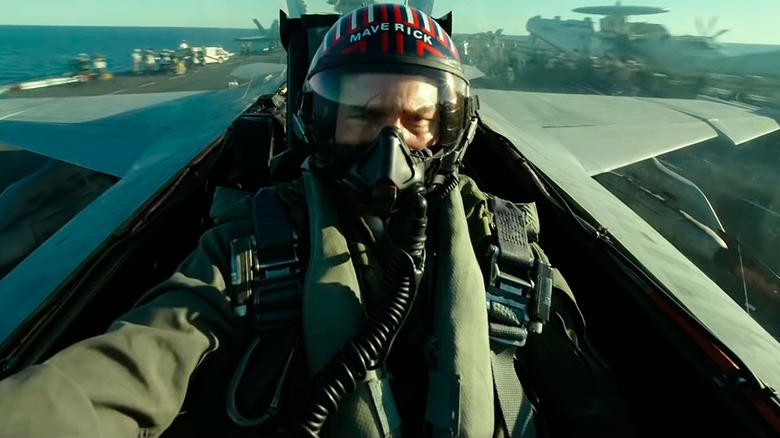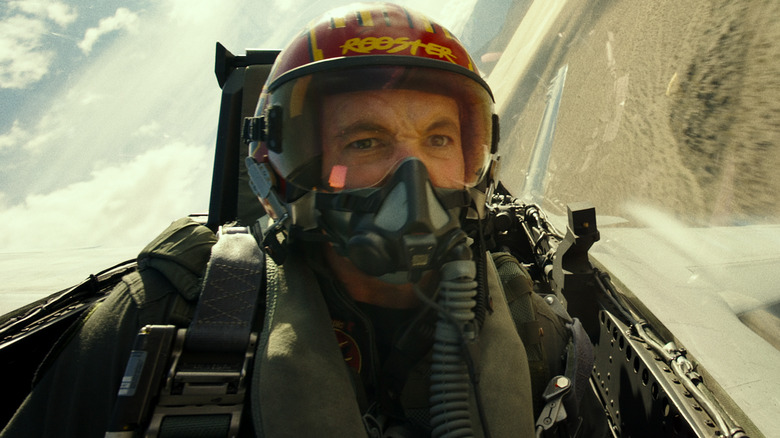Top Gun: Maverick - How Did They Shoot The Groundbreaking Flight Sequences?
"Top Gun: Maverick" took breaking the box office to a whole new level. Of course, a large part of its success can naturally be traced back to star Tom Cruise, who is known for his charisma and dedication to the craft. However, one of the best things in "Top Gun: Maverick" is the realism and authenticity of its aerial action scenes, helped by the fact that all the stars of the film were enlisted in a training program led by father-son team aerial coordinator Kevin LaRosa Jr. and stunt pilot Kevin LaRosa Sr.
"We started training them to fly in Cessna 172 Skyhawks," the younger LaRosa told American Cinematographer, "then in the highly maneuverable and fully aerobatic Extra EA-300 aerobatic monoplanes to increase their G-tolerance, and then in the Aero L-39 Albatros so they could become accustomed to flying high-performance jets."
Early on in production, the aerial coordinator partnered with David B. Nowell and Michael FitzMaurice, the film's aerial cinematographers, to create homemade animatics using iPhones and model airplanes to determine which shots would be worth getting with the real things. "We built an aerial menu book of the most exciting and exhilarating camera angles and maneuvers that we could think of," said LaRosa. "Then, we'd go and test them with real aircraft. We'd learn what worked and what didn't."
The cast of Top Gun: Maverick wasn't going to get away with the usual green screen tricks
One of the key goals for the crew of "Top Gun: Maverick" was to accurately depict the physical effects of zooming across the sky in a Boeing F/A-18F Super Hornet fighter jet, two of which were available for flight scenes during filming. The filmmakers came up with a new and complex six-camera rig that cinematographer Claudio Miranda revealed was initially believed to be impossible. However, with some extensive modification, the camera rigs were installed, all so the "Top Gun" team's array of aerial maneuvers would have the proper physical effects on the actors' faces and sharp-eyed viewers would be able to tell that they weren't captured via green screen or CGI.
The challenges associated with making these fighter jets camera-ready made the usual cinematographic concerns even more involved. "I wanted the sun to come three-quarters from the rear on either side. The main idea is to be backlit," Miranda said. "After all that planning, we still had to guess the exposure. Then once we set the stop on the cameras, that was it."
Of course, "Top Gun: Maverick" also contains plenty of heartstopping aerial shots that don't have the actors in the frame, and for these, a variety of other camera rigs were used, attached to both the planes themselves and an Airbus H125 helicopter for a detached eye in the sky on some of those incredible stunts. "The aerial work is pretty spectacular," said Miranda. "There's a lot of effort up there on the screen." Even without any behind-the-scenes insight, that should be obvious from watching the movie.

